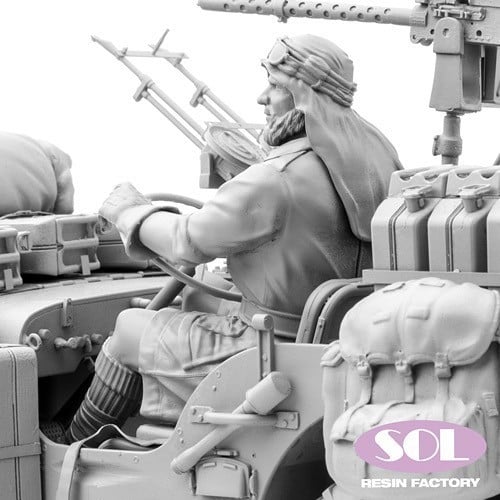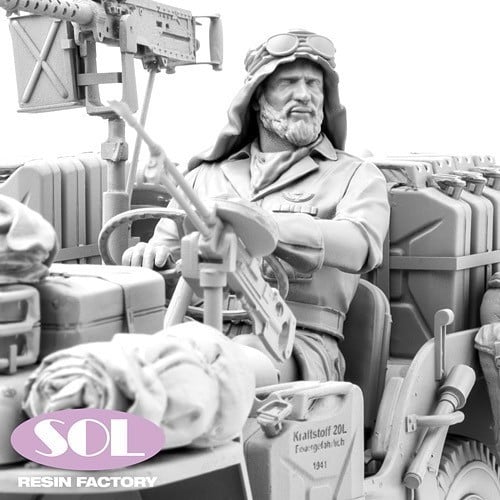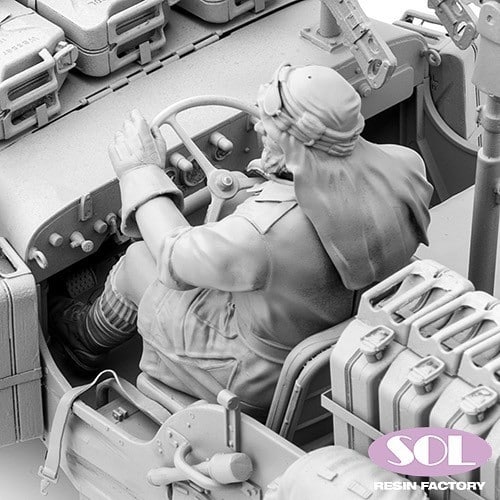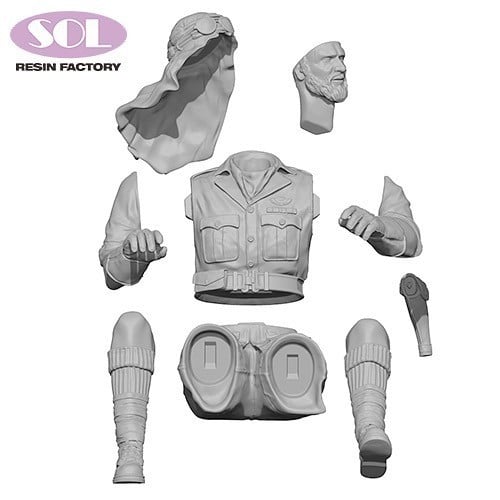SOL Model’s 1/16 Scale WWII SAS Raider
Source: https://solmodel.com/
The SAS Desert Raider: A Heroic Tale of WWII
During World War II, the SAS desert raider was critical in the North African campaign. These brave soldiers were members of the British Special Air Service, a unit that specialized in covert operations behind enemy lines. The SAS desert raider was known for their daring raids and their ability to disrupt enemy supply lines, which played a key role in the Allied victory in North Africa. In this article, we’ll explore the history of the SAS desert raider and the impact they had on the war effort.

SAS patrol in North Africa during WWII (1943) Source: https://en.wikipedia.org/wiki/Special_Air_Service
What was the SAS?
The SAS, or Special Air Service, was a British military unit that was established during World War II. It was created to conduct operations behind enemy lines, including reconnaissance, sabotage, and raids on enemy positions. The SAS was made up of highly trained soldiers who were skilled in a variety of special operations, including parachuting, hand-to-hand combat, and small-unit tactics.
The SAS was formed in 1941 by David Stirling, a British officer who had experience in desert warfare. Stirling saw the need for a specialized unit that could operate in the harsh conditions of the North African desert. The SAS was initially made up of volunteers from other British units, and it quickly became known for its daring raids and its ability to disrupt enemy operations.
The SAS Desert Raider
One of the key roles of the SAS in North Africa was to disrupt enemy supply lines. This was accomplished through a series of raids on enemy convoys and supply depots. The SAS desert raider was a critical part of these operations, as they were responsible for the actual raid itself.
The SAS desert raider was typically made up of four to six soldiers, who were dropped behind enemy lines by parachute or by glider. Once on the ground, the raiders would move quickly to their target, using their knowledge of the desert terrain to avoid detection by the enemy. They would then strike quickly and decisively, using explosives and small arms fire to destroy enemy supplies and equipment.
The SAS desert raider was a highly skilled soldier, trained in a variety of special operations. They were proficient in the use of weapons such as the Sten gun and the Bren gun, and they were skilled in hand-to-hand combat. They were also trained in desert survival techniques, as they often operated for extended periods of time behind enemy lines.
One of the most famous raids conducted by the SAS desert raider was the raid on the airfield at Timimi in 1942. The raid was carried out by a group of SAS soldiers led by David Stirling himself. The raid was a complete success, with the SAS destroying a large number of German aircraft and fuel supplies. The raid had a significant impact on the German war effort in North Africa, as it disrupted their ability to provide air support for their ground forces.
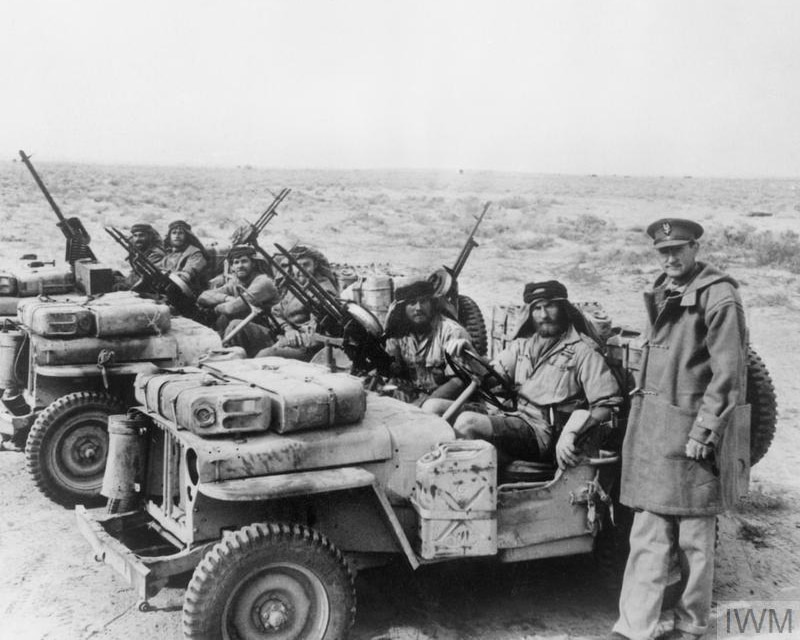
SAS founder Major David Stirling (right) greets a patrol on its return from a mission, 1942. Source: https://www.nam.ac.uk/explore/SAS
Impact on the War
The impact of the SAS desert raider on the war effort in North Africa was significant. Their raids on enemy supply lines and depots disrupted the German and Italian war effort and made it more difficult for them to sustain their troops in the field. This, in turn, gave the Allied forces an advantage in the North African campaign.
The SAS desert raider was also responsible for gathering critical intelligence on enemy positions and movements. This information was used by the Allied command to plan their own operations and to better understand the enemy’s tactics and strategies.
The raids the SAS desert raider conducted were also a significant morale booster for Allied troops. The raids showed that the British were capable of taking the fight to the enemy and that they were willing to take risks to achieve their objectives. This helped to maintain the morale of the troops and to keep them focused on the ultimate goal of victory.
The success of the SAS desert raider in North Africa led to the formation of similar units in other theaters of the war. These units were known by various names, including the SAS in Europe and the Far East, the Special Operations Executive (SOE) in Europe, and the Office of Strategic Services (OSS) in the United States.
The SAS desert raider was critical in the Allied victory in North Africa during World War II. Their daring raids on enemy supply lines and depots disrupted the German and Italian war effort and gave the Allied forces a significant advantage in the North African campaign. The SAS desert raider was a highly skilled and courageous soldier, trained in a variety of special operations and survival techniques. Their success in North Africa led to the formation of similar units in other theaters of the war, and their legacy continues to inspire military units around the world today.
As we look back on the heroism of the SAS desert raider, we are reminded of the sacrifices made by the soldiers who fought in World War II. Their bravery and determination helped to secure our freedom and to shape the world we live in today. We owe them a debt of gratitude that can never be fully repaid.


